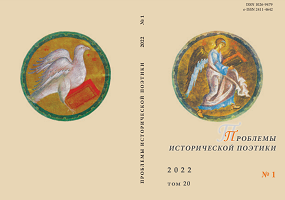Функционально-семантическая значимость молчания в волшебной сказке
Functional and Semantic Characteristics of Silence in the Fairy Tale
Author(s): Iwona RzepnikowskaSubject(s): Customs / Folklore, Semantics, Belarussian Literature, Polish Literature, Russian Literature, Ukrainian Literature
Published by: Петрозаводский государственный университет
Keywords: silence; muteness; fairy tale; brothers turned into birds; a mother’s curse; a father’s curse; initiation; rite of passage; symbolic death; liminality; stasis;
Summary/Abstract: This article focuses on the silence of a fairy tale hero, i. e. a deliberate withholding from speaking that is a metonymic manifestation of a symbolic death. The aim of the study was to determine the meanings of silence that are representative of this type of narration and to indicate their probable mythical and ritual connotations. Research materials included mainly Polish and Eastern Slavic tales of a sister whose silence constitutes a precondition for bringing her brothers, previously turned into birds, back into human form. The analysis showed the use of a semantic component essential to silence required to keep a secret and impossibility of revealing the truth. If a spell can be a result of a parental curse, then suspending communication becomes a form of maintaining bonds with the brothers killed by words. It can also be interpreted as a reflection of the speech behaviour of the parents, who violate the basic folk ethics of the word. The analysed narratives preserved the magical functions of silence as the assurance of the effectiveness of objects made in complete silence (in the given example — shirts made for the spellbound brothers). Nevertheless, in other variants of plot type 451, the silence of the heroine is the most significant precondition for her own existential transformation, with numerous narratives describing the multi-stage nature of the rite of passage (a marriageable girl → a married woman → a newly delivered mother → a mother). In this indirect way the fairy tale reveals the limits of female communicative behaviour in folk culture. In order to present the essence of the liminality of the given story’s heroine, the “stasis” category was used, which helped to correlate her (and any other fairy tale protagonist) basic existential experience with a temporal dimension of human existence construed as regular consecutive time passages and pauses, moments of inactivity (stasis).
Journal: Проблемы исторической поэтики
- Issue Year: 20/2022
- Issue No: 1
- Page Range: 7-29
- Page Count: 23
- Language: Russian

